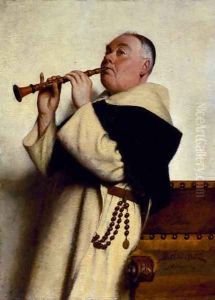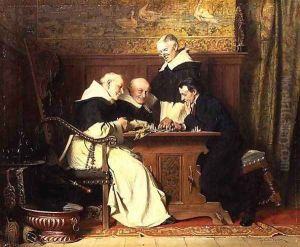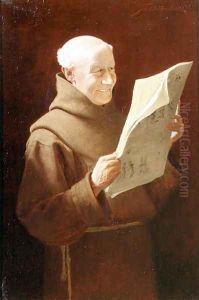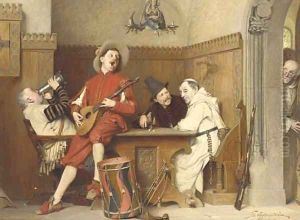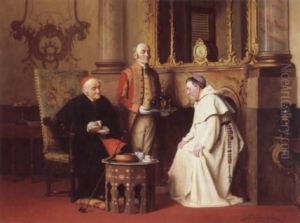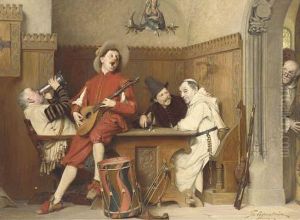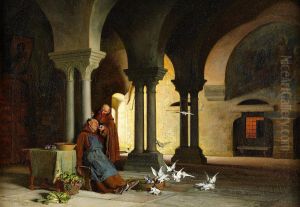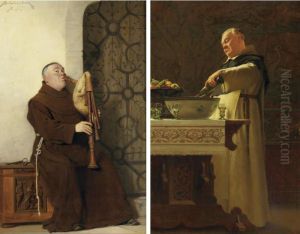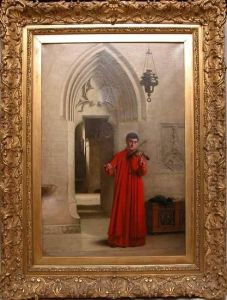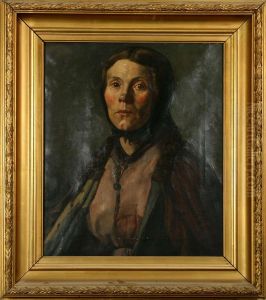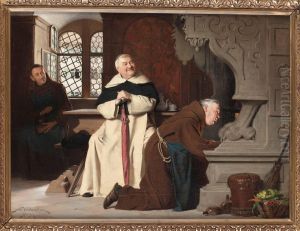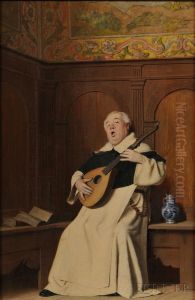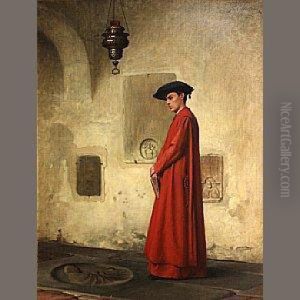Ture Nikolaus Cederstrom Paintings
Ture Nikolaus Cederström was a distinguished Swedish painter, born in 1843 and passing away in 1924. His body of work primarily revolves around genre painting, portraits, and historical scenes, encapsulating the essence of 19th-century Sweden with a unique blend of realism and romanticism. Cederström came from a noble family, which provided him the means and the environment to pursue his artistic ambitions from a young age.
Educated initially in Sweden, his talent and passion for art led him to further his studies abroad, which was a common practice among his contemporaries. He spent significant periods in Paris and Düsseldorf, two key art centers of the 19th century, where he was exposed to the emerging trends of realism and naturalism. These experiences profoundly influenced his artistic direction, integrating European techniques with his Swedish sensibilities.
Upon returning to Sweden, Cederström quickly established himself in the Swedish art scene. His works were celebrated for their detailed depiction of historical events and everyday life, often imbued with a sense of nationalism and pride. He was adept at capturing the nuances of light and shadow, which added a dramatic effect to his paintings, making them highly sought after during his lifetime.
Cederström's contribution to Swedish art was not limited to his paintings. He was also involved in the art education sector, advocating for the importance of arts in society and contributing to the development of art institutions in Sweden. His legacy is preserved in the form of his numerous works housed in museums and collections across Sweden and beyond, as well as his influence on subsequent generations of Swedish artists.
Despite his noble background and the successes he achieved, Cederström remained devoted to his craft, continuously exploring and evolving his style throughout his career. His death in 1924 marked the end of an era but also solidified his position as one of the key figures in the history of Swedish art.
